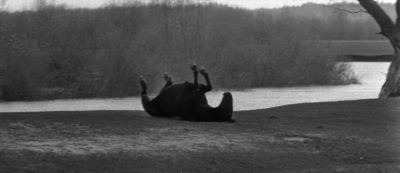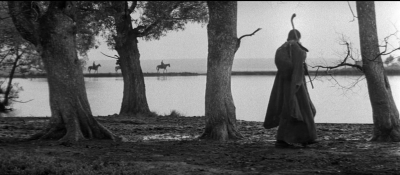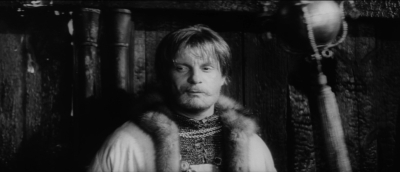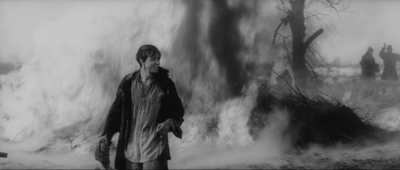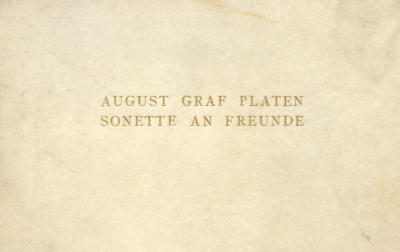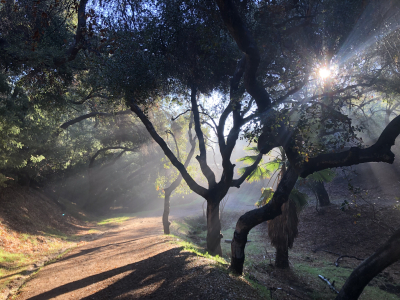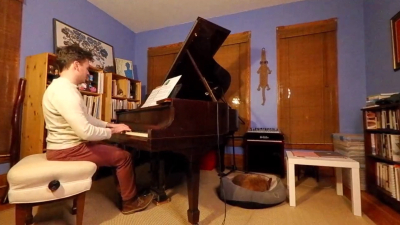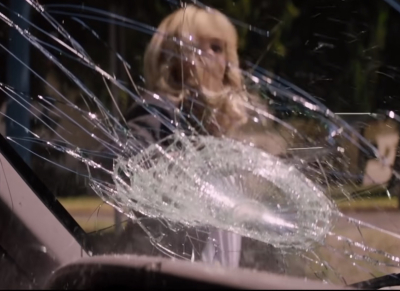Alex Ross's Blog, page 53
February 9, 2021
Tarkovsky footnotes
The Icon-Maker. The New Yorker, Feb. 15 and 22, 2021.
This is a piece that I started writing in 1993, on the occasion of the American publication of Andrei Tarkovsky's diaries, and then set aside. The year 2020 felt like the right time to resume. I first saw the director's films at the Harvard Film Archive in the late 1980s, when the indomitable Vlada Petric was in charge of the programming. I revisited them mainly by way of the Criterion Collection, which has crisp and richly supplemented editions of Ivan's Childhood, Andrei Rublev, Solaris, and Stalker. The Ivan issue throws in Tarkovsky's elegant VGIK graduation film, The Steamroller and the Violin. (Two earlier student films, The Killers and There Will Be No Leave Today, circulate on YouTube, although only the true obsessive will glean much from them.) A new restoration of Mirror is now streaming from Film at Lincoln Center. Kino Lorber has reissued Nostalghia and Sacrifice. If you have a subscription to Criterion Channel, you can not only see Ivan, Rublev, Solaris, and Stalker but also explore the work of Tarkovsky's Soviet-era colleagues: some highlights are Mikhail Kalatozov's pathbreaking The Cranes Are Flying; Larissa Shepitko's spellbinding WWII film The Ascent; Sergei Parajanov's wildly imaginative The Color of Pomegranates; and Elem Klimov's Come and See, a war film of shocking and crushing power.
The Tarkovsky literature is considerable. The essential book is Vida T. Johnson and Graham Petrie's The Films of Andrei Tarkovsky: A Visual Fugue (Indiana UP, 1994). It is valuable both for its keen, clear-eyed analysis and for its fastidious summaries of the films, which shed much light on their more oblique passages. Another excellent starting point is Geoff Dyer's Zona: A Book About a Film About a Journey to a Room (Vintage, 2012), which bores deep into the riddles of Stalker. Tarkovsky's two published books, Sculpting in Time and Time after Time: The Diaries, are mesmerizing on every page, even if certain of the director's grandiose musings on time and fate grow stale on re-reading. Both are translated by Kitty-Hunter-Blair. (Incidentally, this blog's inaugural entry, posted back in 2004, came from the diaries: "I have four razors and a dictaphone.") In 2004, Thames & Hudson published Instant Light, a collection of Tarkovsky's Polaroids, which are, inevitably, more mysterious and stupendous than anyone else's Polaroids. John Gianvito has edited a compendium of Tarkovsky interviews (University Press of Mississippi, 2006).
I also consulted Mark Le Fanu's The Cinema of Andrei Tarkovsky (BFI, 1987); Marina Tarkovskaya's About Andrei Tarkovsky (Progress Publishers, 1990); Peter Green's Andrei Tarkovsky: The Winding Quest (Macmillan, 1993); Natasha Synessios's Mirror (Tauris, 2001); Robert Bird's Andrei Rublev (BFI, 2004); Gunnlaugur A. Jónsson and Thorkell Á. Óttarsson's essay collection Through the Mirror Reflections on the Films of Andrei Tarkovsky (Cambridge Scholar Press, 2006); Nathan Dunne's lavishly illustrated anthology Tarkovsky (Black Dog, 2008); Robert Bird's Andrei Tarkovsky: Elements of Cinema (Reaktion, 2008); Nariman Skakov's The Cinema of Andrei Tarkovsky: Labyrinths of Space and Time (Tauris, 2012); Phoebe Pua's Compositions of Crisis: Sound and Silence in the Films of Bergman and Tarkovsky (Ph.D. diss., Australian National University, 2013); Tobias Pontara's Andrei Tarkovsky's Sounding Cinema: Music and Meaning from "Solaris" to "The Sacrifice" (Routledge, 2019); and, just out from Edinburgh University Press, Sergey Toymentsev's anthology ReFocus: The Films of Andrei Tarkovsky.
Other useful sources were Gilles Deleuze's commentaries in Cinema 2: The Time Image, trans. Hugh Tomlinson and Robert Caleta (University of Minnesota Press, 1989); P. Adams Sitney's The Cinema of Poetry (Oxford, 2014); Steven Dillon's The Solaris Effect: Art and Artifice in Contemporary American Film (University of Texas Press, 2006); Peter Green's "Apocalypse and Sacrifice," Sight and Sound 56:2 (1987), pp. 111–18; Roger Hilman's "Tarkovsky's Odes to . . . Joy?," Slavic and East European Performance 17:3 (1997), pp. 30–36; Boris Natanovich Strugatsky and Erik Simon's "Working for Tarkovsky," Science Fiction Studies 31:3 (2004), pp. 418–20; Robert Bryan's "Lighting Boris Godunov with Andrei Tarkovsky," Opera Quarterly 26:1 (2010), pp. 122–28; and John A. Riley's "Hauntology, Ruins, and the Failure of the Future in Andrei Tarkovsky's Stalker," Journal of Film and Video 69:1 (2017), pp. 18–26. An especially fascinating document is Stan Brakhage's "Brakhage Meets Tarkovsky," Chicago Review 47/48 (2001–2002), pp. 42–46, which describes Tarkovsky's almost comically rude response to the great experimental filmmaker. One of the most haunting pieces ever written about the director is Robert Bird's "The Omens: Tarkovsky, Sacrifice, Cancer," which Apparatus published last year. I knew Robert over e-mail and was planning to reach out to him as I set to work on this article. I was saddened to discover that he had died in September, at the age of fifty.
I frequently visited the Nostalghia website, whose trove of Tarkovskiana includes passages from the diaries that are not available in the standard English edition. I also browsed a cache of YouTube videos uploaded by Charles M. Here you can see various interviews with the director, behind-the-scenes footage, documentaries in several languages, a glimpse of Tarkovsky's funeral, his occasional acting appearances, and interviews with his associates. Among the oddities on offer is a snippet of film showing Tarkovsky touring Monument Valley in 1983. This was his only American visit, the result of an invitation from the Telluride Film Festival. That appearance went poorly, with Tarkovsky's haughty strictures against Hollywood alienating American filmmakers and inspiring a protest from none other than Richard Widmark. In 2008, Jim Emerson wrote an amusing account of the brouhaha for Roger Ebert's blog.
Tarkovsky has a potent appeal among musicians and composers. When I interviewed Alfred Schnittke in 1994, I couldn't resist asking about his great contemporary. Schnittke said: "Unfortunately I never worked with him. I would be happy if that were true, if that had actually happened. It had been a dream of ours, but it never actually happened." Toru Takemitsu, Luigi Nono, Gyorgy Kurtág, Wolfgang Rihm, and Beat Furrer all wrote works in Tarkovsky's memory; Claudio Abbado presented four of those pieces at a Wien Modern concert in 1991 and recorded them for DG. Paul Griffiths reviewed the disc insightfully for the New York Times. It was Abbado who enticed Tarkovsky into the opera house, for a production of Boris Godunov at Covent Garden in 1983. The staging was later re-created at the Mariinsky and released on video, though its impact was diminished in the process. The most potent image is a pendulum that swings at the back of the stage in several scenes; when I saw it, I thought of the swinging censer in Andrei Rublev (see the third freeze frame above). At the time of his death, Tarkovsky was preparing to return to opera, again at Covent Garden. The piece? Wagner's Flying Dutchman.
Much thanks to Anya Kordunsky, Daniel Zalewski, David Remnick, Nico Chapin, Vida Johnson, and Mikhail Ratgauz.
February 8, 2021
Tarkovsky
The Icon-Maker. The New Yorker, Feb. 15 and 22, 2021.
I first saw Tarkovsky's films at the Harvard Film Archive in the late 1980s, when the indomitable Vlada Petric was in charge of the programming. I revisited them mainly by way of the Criterion Collection, which has crisp and richly supplemented editions of Ivan's Childhood, Andrei Rublev, Solaris, and Stalker. The Ivan issue throws in Tarkovsky's elegant VGIK graduation film, The Steamroller and the Violin. (Two earlier student films, The Killers and There Will Be No Leave Today, circulate on YouTube, although only the true obsessive will glean much from them.) A new restoration of Mirror is now streaming from Film at Lincoln Center. Kino Lorber has reissued Nostalghia and Sacrifice. If you have a subscription to Criterion Channel, you can not only see Ivan, Rublev, Solaris, and Stalker but also explore the work of Tarkovsky's Soviet-era colleagues: some highlights are Mikhail Kalatozov's pathbreaking The Cranes Are Flying; Larissa Shepitko's spellbinding WWII film The Ascent; Sergei Parajanov's wildly imaginative The Color of Pomegranates; and Elem Klimov's Come and See, a war film of shocking and crushing power.
The Tarkovsky literature is considerable. The essential book is Vida T. Johnson and Graham Petrie's The Films of Andrei Tarkovsky: A Visual Fugue (Indiana UP, 1994). It is valuable both for its keen, clear-eyed analysis and for its fastidious summaries of the films, which shed much light on their more oblique passages. Another excellent starting point is Geoff Dyer's Zona: A Book About a Film About a Journey to a Room (Vintage, 2012), which bores deep into the riddles of Stalker. Tarkovsky's two published books, Sculpting in Time and Time after Time: The Diaries, are mesmerizing on every page, even if the director's grandiose musings on time, fate, and artistic suffering grow stale on re-reading. Both are translated by Kitty-Hunter-Blair. I should note that this blog's inaugural entry, posted back in 2004, came from the diaries: "I have four razors and a dictaphone." In 2004, Thames & Hudson published Instant Light, a collection of Tarkovsky's Polaroids, which are, inevitably, more mysterious and stupendous than anyone else's Polaroids. John Gianvito has edited a compendium of Tarkovsky interviews (University Press of Mississippi, 2006).
I also consulted Mark Le Fanu's The Cinema of Andrei Tarkovsky (BFI, 1987); Marina Tarkovskaya's About Andrei Tarkovsky (Progress Publishers, 1990); Peter Green's Andrei Tarkovsky: The Winding Quest (Macmillan, 1993); Natasha Synessios's Mirror (Tauris, 2001); Robert Bird's Andrei Rublev (BFI, 2004); Gunnlaugur A. Jónsson and Thorkell Á. Óttarsson's essay collection Through the Mirror Reflections on the Films of Andrei Tarkovsky (Cambridge Scholar Press, 2006); Nathan Dunne's lavishly illustrated anthology Tarkovsky (Black Dog, 2008); Robert Bird's Andrei Tarkovsky: Elements of Cinema (Reaktion, 2008); Nariman Skakov's The Cinema of Andrei Tarkovsky: Labyrinths of Space and Time (Tauris, 2012); Phoebe Pua's Compositions of Crisis: Sound and Silence in the Films of Bergman and Tarkovsky (Ph.D. diss., Australian National University, 2013); Tobias Pontara's Andrei Tarkovsky's Sounding Cinema: Music and Meaning from "Solaris" to "The Sacrifice" (Routledge, 2019); and, just out from Edinburgh University Press, Sergey Toymentsev's anthology ReFocus: The Films of Andrei Tarkovsky.
Other useful sources were Gilles Deleuze's commentaries in Cinema 2: The Time Image, trans. Hugh Tomlinson and Robert Caleta (University of Minnesota Press, 1989); P. Adams Sitney's The Cinema of Poetry (Oxford, 2014); Steven Dillon's The Solaris Effect: Art and Artifice in Contemporary American Film (University of Texas Press, 2006); Peter Green's "Apocalypse and Sacrifice," Sight and Sound 56:2 (1987), pp. 111–18; Roger Hilman's "Tarkovsky's Odes to . . . Joy?," Slavic and East European Performance 17:3 (1997), pp. 30–36; Boris Natanovich Strugatsky and Erik Simon's "Working for Tarkovsky," Science Fiction Studies 31:3 (2004), pp. 418–20; Robert Bryan's "Lighting Boris Godunov with Andrei Tarkovsky," Opera Quarterly 26:1 (2010), pp. 122–28; and John A. Riley's "Hauntology, Ruins, and the Failure of the Future in Andrei Tarkovsky's Stalker," Journal of Film and Video 69:1 (2017), pp. 18–26. An especially fascinating document is Stan Brakhage's "Brakhage Meets Tarkovsky," Chicago Review 47/48 (2001–2002), pp. 42–46, which describes Tarkovsky's almost comically rude response to the great experimental filmmaker. One of the most haunting pieces ever written about the director is Robert Bird's "The Omens: Tarkovsky, Sacrifice, Cancer," which Apparatus published last year. I knew Robert over e-mail and was planning to reach out to him as I set to work on this article. I was saddened to discover that he had died in September, at the age of fifty.
I frequently visited the Nostalghia website, whose trove of Tarkovskiana includes passages from the diaries that are not available in the standard English edition. I also browsed a cache of YouTube videos uploaded by Charles M. Here you can see various interviews with the director, behind-the-scenes footage, documentaries in several languages, a glimpse of Tarkovsky's funeral, his occasional acting appearances, and interviews with his associates. Among the oddities on offer is a snippet of film showing Tarkovsky touring Monument Valley in 1983. This was his only American visit, the result of an invitation from the Telluride Film Festival. That appearance went poorly, with Tarkovsky's haughty strictures against Hollywood alienating American filmmakers and inspiring a protest from none other than Richard Widmark. In 2008, Jim Emerson wrote an amusing account of the brouhaha for Roger Ebert's blog.
Tarkovsky has a potent appeal among musicians and composers. When I interviewed Alfred Schnittke in 1994, I couldn't resist asking about his great contemporary. Schnittke said: "Unfortunately I never worked with him. I would be happy if that were true, if that had actually happened. It had been a dream of ours, but it never actually happened." Toru Takemitsu, Luigi Nono, Gyorgy Kurtág, Wolfgang Rihm, and Beat Furrer all wrote works in Tarkovsky's memory; Claudio Abbado presented four of those pieces at a Wien Modern concert in 1991 and recorded them for DG. Paul Griffiths reviewed the disc insightfully for the New York Times. It was Abbado who enticed Tarkovsky into the opera house, for a production of Boris Godunov at Covent Garden in 1983. The staging was later re-created at the Mariinsky and released on video. Its most potent image is a pendulum that swings at the back of the stage in several scenes; when I saw it, I thought of the swinging censer in Andrei Rublev (see the third freeze frame above). At the time of his death, Tarkovsky was preparing to return to opera, again at Covent Garden. The piece? Wagner's Flying Dutchman.
Much thanks to Anya Kordunsky, Daniel Zalewski, David Remnick, Nico Chapin, Vida Johnson, and Mikhail Ratgauz.
February 5, 2021
Heine v. Platen
February 1, 2021
An F. Andrieu moment
There is, alas, no other F. Andrieu moment.
January 31, 2021
Fred Rogers, Wagnerian
Jim Smith, the proprietor of Sunstone Press in Santa Fe, was a longtime friend of the great television educator Fred Rogers. Smith recently drew my attention to a fascinating Santa Fe New Mexican piece, by Mark Tiarks, about Rogers's musical career. Rogers majored in composition at Rollins College; his graduation piece is above. Tiarks notes that Rogers's roommate at Rollins was the future Metropolitan Opera baritone John Reardon, who would also sing the lead roles in the miniature operas that were a recurring feature of Mister Rogers' Neighborhood. The tradition ended when Reardon died of AIDS in 1988. After graduation, Rogers served for a time as a floor manager at NBC, learning the television business. One of his assignments was the NBC Opera Theatre, where he worked on Amahl and the Night Visitors, Trouble in Tahiti, and a condensed Billy Budd. He discusses that phase of his career in an Archive of American Television interview; at 6:55, you can hear him singing a snippet of Billy Budd. Tiarks writes: "Although his ego was at the opposite end of the spectrum compared to Richard Wagner’s, Rogers took Wagner’s Gesamtkunstwerk approach, writing all the scripts, as well as the lyrics and music for the more than 200 songs performed on [the show]." I will see if I can incorporate that provocative insight into a revised version of Wagnerism. Years ago, Jim Smith told me Rogers enjoyed reading my New Yorker columns; it's the best compliment I've ever received.
January 30, 2021
January 28, 2021
Miscellany
WasteLAnd, the LA-based new-music series, makes a virtual return on Jan. 29 with the premiere of Davíð Brynjar Franzson's evening-length voice fragments, featuring soprano Stephanie Aston .... On the same day, the Berlin Philharmonic will introduce CATAMORPHOSIS, a new piece by Anna Thorvaldsdottir.... Tyshawn Sorey, recently the focus of a brilliant New York Times Magazine profile by Adam Shatz, has a new vocal piece called Save the Boys, which Opera Philadelphia will introduce on Feb. 12, with John Holiday singing. ... No Mozart or Beethoven, lots of Chabrier, Schreker, and Robert Simpson: John Ashbery's CD collection, circa 2008.... A Joshua Rosenblum review in Opera News led me to Tulsa Opera's wonderfully quirky baseball-diamond production of Rigoletto.... It was a great honor to sit for an epic-length Do the Math interview with Ethan Iverson. Don't miss Ethan's survey of the Wagnerian Piano.... The composer Michael Hersch has uploaded a video of his ten-hour piece sew me into a shroud of leaves, as heard at the Wien Modern in Nov. 2019.... At 6:55 in this clip, Fred Rogers sings Britten's Billy Budd (very briefly). He's discussing his work as floor manager for the NBC Opera Theatre.
January 18, 2021
January 17, 2021
Valitutto, sunrise to sunset
Here is the program of simple lines / quiet music / silent songs, a remarkable marathon recital that the pianist Richard Valitutto gave today at his apartment in Ithaca NY, as part of Wild Up's Darkness Sounding festival. I am now catching up with a recital that Valitutto gave at Cornell last month.
SET 1 — 9:58am-11:40am EST // 6:58am-8:40am PST
“gardens, cities, palaces” (100 min)
eva-maria houben: le jardin suspendu (2015)
eva-maria houben: a walk through the bamboo garden (2020)
Alvin Curran: Inner Cities 1 (1993)
Morton Feldman: Palais de Mari (1986)
SET 2 — 11:50am-2:30pm EST // 8:50am-11:30am PST
“soft, silent 1” (45 mins)
Federico Mompou: Música callada, Book I (1959)
Valentin Silvestrov: Silent Songs, Book I (1974/77)
“hin und da” (110 mins)
Ann Southam: Simple Lines of Enquiry (2008)
Jürg Frey: La présence, les silences (2014-15)
SET 3 — 3:00-5:00pm EST // 12:00-2:00pm PST
“soft, silent 2” (60 mins)
Federico Mompou: Música callada, Book II (1962)
Valentin Silvestrov: Silent Songs, Book II (1974/77)
“nocturnes, lullabies, chorales” (60 mins)
Taylan Susam: Nocturnes (2009)
eva-maria houben: three lullabies (2007)
Wolfgang von Schweinitz: Plainsound Lullaby (2014)
Linda Catlin Smith: Nocturnes & Chorales (2013)
Richard Valitutto: giant moon / light steps (2020)
SET 4 — 5:10-6:20pm EST // 2:10-3:20pm PST
“soft, silent 3” (70 min)
Federico Mompou: Música callada, Books III & IV (1965-67)
Valentin Silvestrov: Silent Songs, Books III & IV (1974/77)
SET 5 — 6:35-8:08pm EST // 3:35-5:08pm PST
“philosophia” (100 min)
Laurence Crane: Jacques Derrida Goes to a Nightclub (1986)
Chris Rountree: Immediate Tragedy (2020, 7 min)
Laurence Crane: Jacques Derrida Goes to a Massage Parlor (1986)
Thomas Feng: This Illusion Meant Something (2018)
Laurence Crane: Kierkegaard His Prelude (1986)
Andrew McIntosh: I have a lot to learn (2019)
Nick Norton: On Nothing (2020)
Laurence Crane: Jacques Derrida Goes to the Supermarket (1986)
jürg frey: sam lazaro bros (1984)
Laurence Crane: Jacques Derrida Goes to the Beach (1986)
Alvin Curran: Endangered Species (1994-96)
Laurence Crane: Kierkegaard His Walk Around Copenhagen (1986)
Linda Catlin Smith: The Underfolding (2001)
January 15, 2021
Wagnerism alert
There is an absolutely superb Wagnerian moment in Emerald Fennell's new film Promising Young Woman. I won't divulge details, but Isolde's Transfiguration is involved.
Alex Ross's Blog
- Alex Ross's profile
- 425 followers


